Eyeglasses are more popular now than ever. They're a staple in modern fashion despite advances in contacts and vision correction surgery. Even people with perfect vision are adding non-prescription eyewear into their wardrobe.
With so many different frames, lenses, and treatments available, picking a new pair of glasses can be overwhelming. This guide will explain all the different types of glasses available.
Single vision lenses are the cheapest and most common type of eyeglass lenses. They have the largest field of vision because they only correct vision at one specific distance (either far or near).
If you are nearsighted, farsighted, or have astigmatism, you’ll most likely be prescribed single vision lenses.
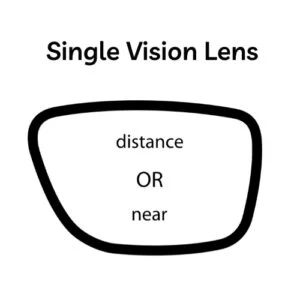
Bifocal lenses are multifocal, meaning they have two different "powers" in them. These different sections of the lens correct distance vision and near vision.
Bifocal lenses are prescribed for people with multiple vision problems.
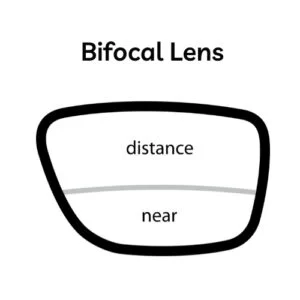
Trifocal lenses are similar to bifocals. But they have an additional power to correct intermediate vision. The intermediate portion may be used to view a computer screen, for example.
The main shortcoming of bifocals and trifocals is that they have a distinct line between each field of vision. This makes the sections of the lens produce drastically different vision. Most people get used to this and don’t have an issue. But this drawback has led to the development of more advanced lenses, such as progressives.
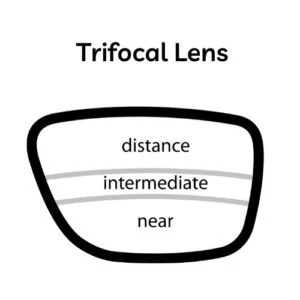
Progressive lenses work for anyone who needs bifocals or trifocals. They provide the same correction for near, intermediate, and distance vision. They do this without the lines between each section.
Many people prefer these lenses because the transition between fields of vision is smoother.
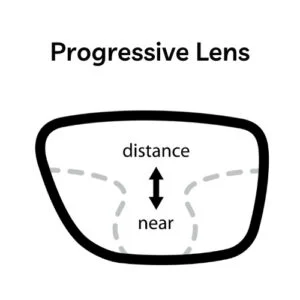
Non-prescription glassesserve a variety of functions, including preventative eye care, safety, and fashion.
Reading glasses are available over-the-counter (OTC) or via prescription. They improve your ability to see things up close, especially when reading books, newspapers, laptops, and phone screens.
OTC reading glasses work well for people with the same vision in each eye and good distance vision. These come in strengths from +1.0 to +4.0. If you are suffering from digital eye strain, double vision, or getting headaches from your reading glasses, get an eye exam and see if you need prescription glasses.
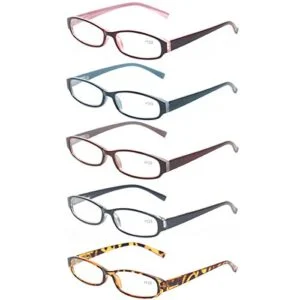
Blue light glasses, also called computer glasses, are becoming more and more popular. Especially among the millennial generation.
Most adults spend a significant portion of their day on their computers, phones, and tablets. These glasses can help protect your eyes and improve your sleep schedule.

Many professions use safety glasses, including construction, science labs, electrical work, plumbing, auto repair, and more. They can be purchased very cheaply for basic protection.
If you need vision correction, you can get goggles that fit over your regular glasses or buy prescription safety glasses. They can be fitted with the same lenses and treatments as regular frames.
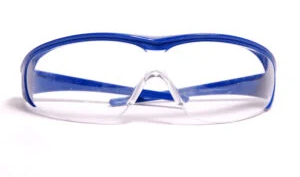
sunglasses with or without a prescription. They can have polarized lenses, or UV protection treatment.
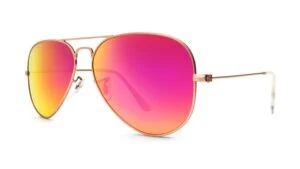
There has been an increase in popularity in non-prescription glasses recently. These are mainly fashion accessories. However, they may also serve as safety glasses in certain low-risk situations.
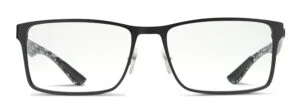
Choosing the right eyeglass frames is very important. You should find a pair that fits your lifestyle, is comfortable for long-term wear, and expresses your personal style.
There are two main types of material used to make glasses frames:
Manufacturers use several types of plastic to make frames, including zylonite, nylon blends, and castor seed oil.
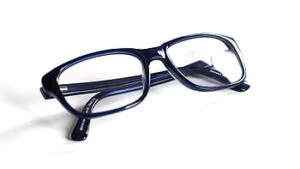
There are many different metals used to make glasses frames including:
- Monel
- Titanium
- Beryllium
- Stainless steel
- Flexon
- Aluminum
The price of metal frames varies depending on the material used. They can cost the same as plastic frames or reach double to triple the price.
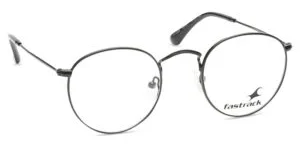
There are three types of frames:
Full frames completely outline the lens. They are the most durable frame type, and we recommend them for thick lenses.
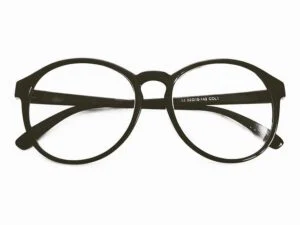
Semi-rimless frames cover the top portion of the lens. They are lighter and more comfortable but expose the lens to chips and cracks.
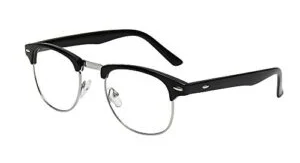
Rimless frames provide the largest field of vision and are the most lightweight option. However, they are more delicate than other frames.
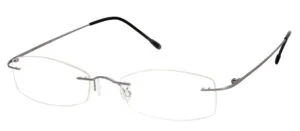
One of the best ways to narrow down your frame options is to determine what face shape you have. Here are the seven basic face shapes and what frames usually go well with them.
Round faces have a circular appearance with no strong edges or angles. Your face is short, with your cheekbones being the widest part. Frames with sharp angles will help balance out your features.
Ideal Frame Types:

A square face shape has a similar height and length. You have a wide, angular jaw and a broad forehead. Rounded shapes that are wider at the top will complement your face shape and add softness. Oval and rectangular frames will add balance and structure.
Ideal Frame Types:
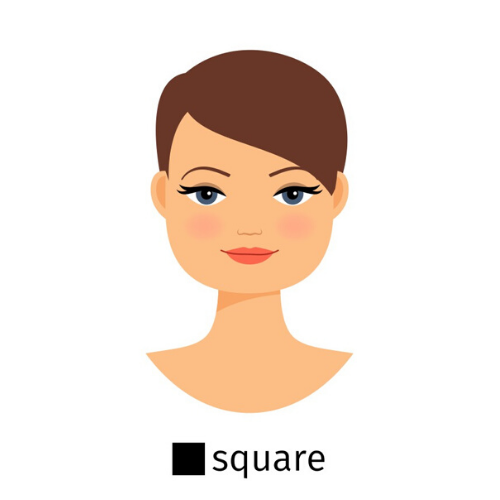
A heart-shaped face has a broader forehead, prominent cheekbones, and a narrow chin. Round frames help soften angles, while rectangular frames, or frames that are wider at the bottom, can add balance.
Ideal Frame Types:

An oval face shape has balanced proportions. Your cheekbones are wider than your forehead, you have no sharp angles on your jaw or chin. And your face is longer than it is wide. Frames that are just as wide or wider than your cheekbones will help maintain your natural balance.
Ideal Frame Types:
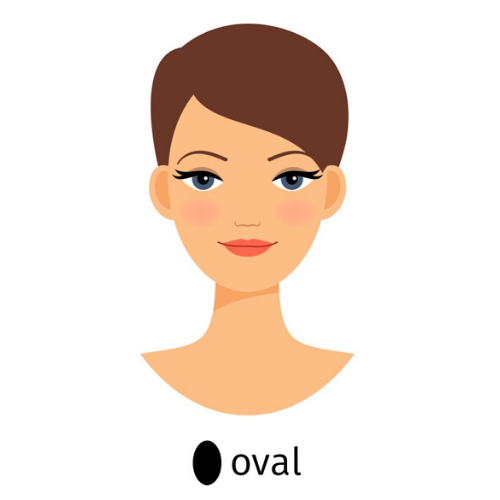
An oblong face shape is longer than it is wide, similar to an oval shape. The difference is an oblong face shape has a long, straight cheek line. Thick, angular frames will balance the round features.
Ideal Frame Types:
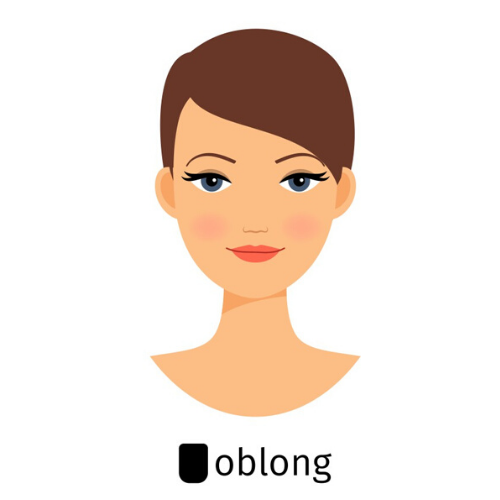
Diamond-shaped faces are the rarest. They have narrow, angular jaw lines, prominent cheekbones, and narrow foreheads. Rounded frames will add softness and balance.
Ideal Frame Types:
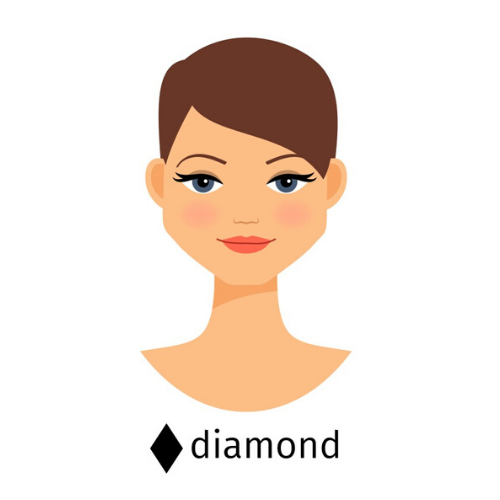
A base-down triangular face has a broad jawline, wide cheeks, and a narrow forehead. Glasses with a wider top rim help to balance features.
Ideal Frame Types:
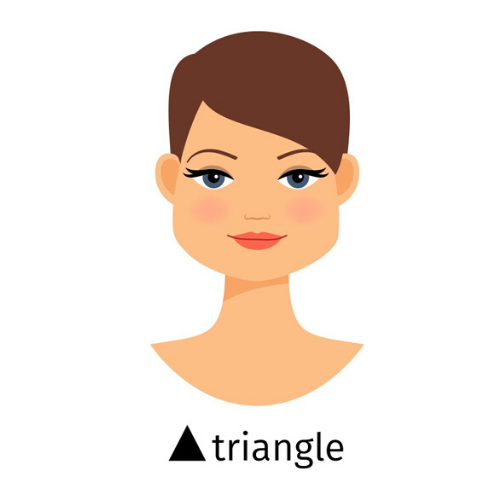
Besides the standard prescriptions, there are a variety of lens options when choosing your glasses.
Glass lenses provide excellent visual acuity. However, they are very heavy and prone to cracking and shattering. Their substantial weight and potential safety issues have caused them to become unpopular. They are still available, but most lenses are made of some type of plastic now.
Most lenses these days are made out of plastic because they can produce similar results to glass. Plastic is cheaper, lighter, and safer than glass.
High-index plastic lenses are even thinner and lighter than most plastic lenses.
Polycarbonate plastic lenses are standard in safety glasses, sports goggles, and children’s eyewear. They are lightweight and impact-resistant, making them much less likely to crack or shatter.
Similarly, Trivex is a lightweight and durable plastic that can be used in high-risk environments. These lenses are also thinner than basic plastic lenses, but not as thin and lightweight as high-index lenses.
Aspheric lenses are flatter and thinner. This makes them a great choice for stronger prescriptions that need thicker lenses. They also reduce unwanted magnification of the wearer’s eyes. They may also increase visual acuity in some cases.
HD lenses use computer-controlled surfacing technology to create free-form or wavefront lenses. These can take your visual acuity to the next level. These will be much more expensive than traditional lenses.
Photochromatic lenses, commonly known as Transitions, are a popular choice. They darken when they are exposed to UV rays, which eliminates the need for sunglasses. They are available in all prescription lens types.
Applying a clear scratch-resistant coating to the front and back of lenses increases their durability. Most modern lenses come with scratch-resistance built-in. If yours don't, you can usually add it for a small additional cost.
Anti-reflective coating, also called AR coating or anti-glare coating, eliminates reflections from your lenses. This increases comfort and visibility, especially when driving, reading, or using a screen at night. It also makes your lenses nearly invisible so that others can see your eyes through your lenses.
Anyone with glasses in a cold climate is familiar with the fogging that happens to your lenses. Anti-fog coating can help eliminate this effect. There are permanent anti-fog treatments available, as well as weekly drops to treat your lenses yourself.
Think of this as sunblock for your eyeballs. Adding a UV-blocking dye to your lenses will reduce the number of UV rays that reach your eyes. UV light contributes to the development of cataracts.